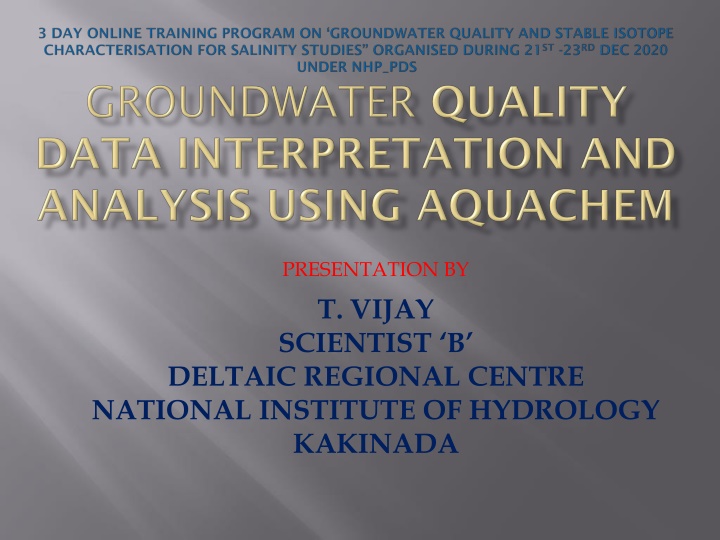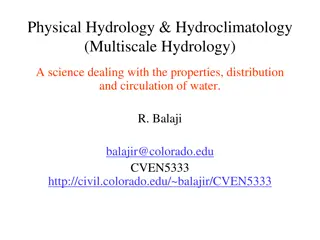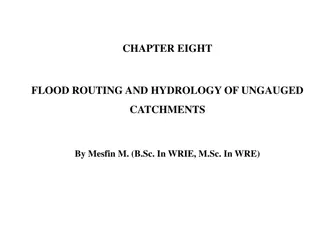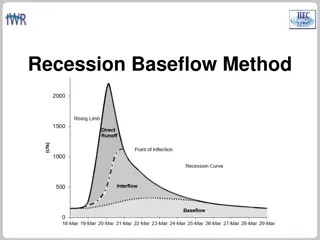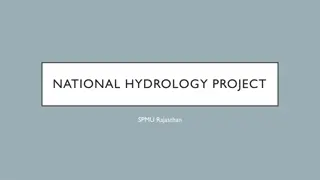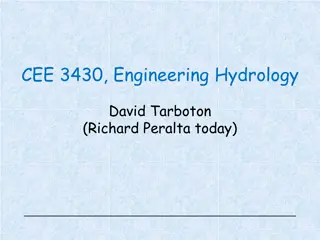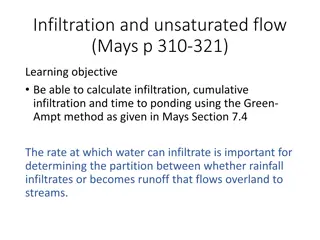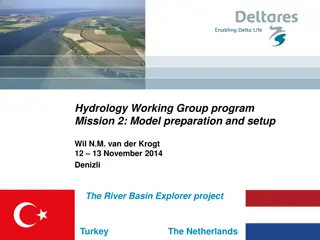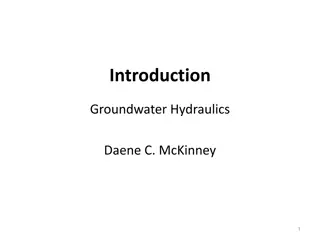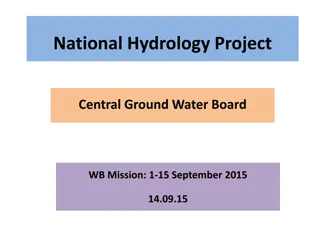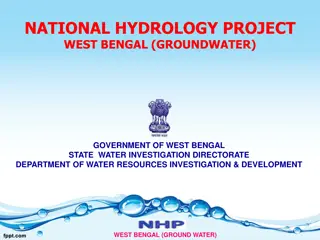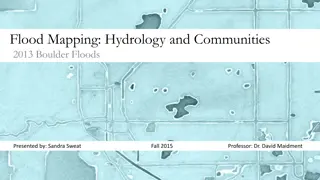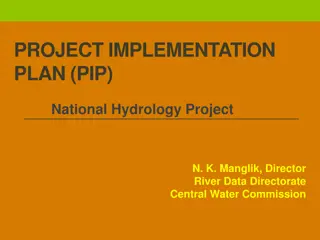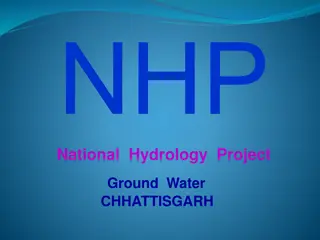NATIONAL INSTITUTE OF HYDROLOGY
Rainwater is naturally pure but picks up minerals as it percolates into the ground. Excess or deficit of minerals in water can impact health, aquatic life, agriculture, and industry. Testing water for minerals, physical, chemical parameters, and heavy metals is crucial. Be cautious of toxic elements in water sources due to agricultural, domestic, and industrial practices.
Download Presentation

Please find below an Image/Link to download the presentation.
The content on the website is provided AS IS for your information and personal use only. It may not be sold, licensed, or shared on other websites without obtaining consent from the author.If you encounter any issues during the download, it is possible that the publisher has removed the file from their server.
You are allowed to download the files provided on this website for personal or commercial use, subject to the condition that they are used lawfully. All files are the property of their respective owners.
The content on the website is provided AS IS for your information and personal use only. It may not be sold, licensed, or shared on other websites without obtaining consent from the author.
E N D
Presentation Transcript
PRESENTATION BY T. VIJAY SCIENTIST B DELTAIC REGIONAL CENTRE NATIONAL INSTITUTE OF HYDROLOGY KAKINADA
Rain Water is very pure and does not have any minerals or chemicals before reaching to ground. When it touches and percolates into the earth, it acquire quality due to dissolution of minerals in the earth crust. Thus groundwater is attaining the taste with these minerals. But our body needs certain minerals to quench the thirsty and energy to the body
Excessive or deficit of minerals in the water plays key role in the health of not only on Human beings, but also on aquatic life, agriculture yields, industrial uses etc. To fulfil the needs of our daily activities, the water is to be examined for its quality in the laboratory and compare the parameters with the BIS standards. Under this, to ascertain the quantity of minerals in the water, the water is tested for various Physical, Chemical, Heavy metals, Bacteriological and Radiological parameters.
Taste Colour Odour Temperature pH Electrical Conductivity Total Dissolved Solids Total Hardness Dissolved Oxygen (DO) Turbidity Total Alkalinity etc.
A) CATIONS : Calcium Magnesium Sodium and Potassium B) ANIONS : Chloride Bicarbonate Carbonate Sulphate Nitrate and Phosphate
These are mostly Toxic. Body needs traces of some of these heavy metals and excessive metals will cause the ill health by damaging most of the body parts. Arsenic Lead Zinc Nickel Cadmium Iron Mercury Copper Manganese Aluminium etc.
Agricultural practices by applying excessive fertiliser and pesticides and allowing to mix in groundwater or surface water. Domestic practices of allowing the Used water of detergents, oils, vegetable waste, water from Toilets into the ground, thus into Groundwater. Industrial practices by mixing the effluents, which may be toxic into the Surface water and Groundwater. Geologically water is polluted : a) like presence of water in Arsenic, Fluoride source rocks and b) due to nearness of Sea causes Sea Water Intrusion into the Groundwater or backwaters into Surface waters
Presence of Pathogens in the Water : Bacteria and Protozoa and Virus A)Bacteria (mainly Faecal e-coliform) causes : Typhoid, Dysentery, Cholera B) Protozoa causes : Dysentery, Gastroenteritis etc C)Virus causes : Hepatitis, Polio etc. So taking care of the Health, all these Parameters in the water are to be analysed in the Laboratory.
After the Analysis of Water, the data generated is to be interpreted for the understanding of the common man or to the user. For presentation of this data, different Ratios and Graphical interpretations are available, both manually and Computer based. The Graphical representation of data includes: Piper Trilinear , Stiff, Wilcox, Gibb s, Durov, US Salinity Classification etc. All these Diagrams reveals the physical nature and fitness of the water for Drinking/Agriculture.
Developed by Waterloo Hydrogeologic, Ontario. Canada for Windows platform. Aquachem is used mainly for Applications of : Aqueous Geochemical data of Graphical and Numerical Analysis Plotting Data Analysis
A piper plot is comprised of three components: 1) The lower-left ternary plot representing cations (magnesium, sodium plus potassium, and calcium); 2) The lower-right ternary plot representing anions (carbonate plus bicarbonate, sulfate, and chloride); and 3) A middle diamond plot, which is a matrix transformation of the two ternary diagrams. Each sample is normalized (sum of cations = 100 and sum of anions = 100), so the relative concentrations are on a percentage basis. Concentration should be in meq/L.
The data points in the center diamond are located by extending the points in the lower triangles to point of intersection in the center plot The axis values at the top and bottom of the center diamond are 100 ;the axis values on the left and right side of the center plot are 0. The diamond plot then can be analysed to tell the type of groundwater. Samples in the top quadrant are Calcium sulphate waters (gypsum groundwater or mining water). Samples in the left quadrant are Calcium Bicarbonate waters , which are typical of shallow fresh groundwater. Samples in the right quadrant are Sodium Chloride waters, which are typical of marine and deep ancient groundwater. Samples in the bottom quadrant are Sodium bicarbonate waters, typical of deep groundwater influenced by ion exchange.
The Graphical types available are: Piper, Durov and Ternary Diagrams Ludwig-Langelier and Schoelloer Graphs Radial, Stiff and Pie Diagrams X-Y Scatter graphs, Frequeny histograms and Time series graphs Geothermometer plots and Maps plots of sample locations
Water Type Ion balance error Measured TDS and Calculated TDS Permanent Hardness, Temporary Hardness Major ion compositions Ionic ratios Dissolved minerals Drinking water regulations Irrigation Water Quality (Salinity, SAR, Mg Hazard)
